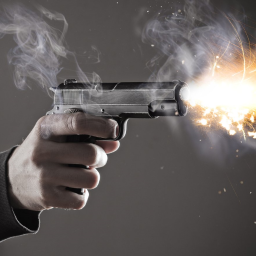


223 Remington (metric designation 5.56x45mm). 222 Remington Special, was finally released as. The Armalite AR-15 rifle, first prototype At the same time, experts at Sierra Bullets and Remington, in conjunction with Armalite, began to develop a new. 22 caliber, lightweight, select-fire, and capable of penetrating a standard steel helmet at 500 meters.Įugene Stoner, then a designer at Armalite, began to develop this rifle, based on his earlier design – the 7.62mm AR-10 automatic rifle. In the year 1957 The US Army requested the Armalite Division of the Fairchild Aircraft Corp to develop a rifle of. The problem was, that the widely promoted SPIW program seemed to have no end, and the recently adopted “full-power” 7.62mm M14 rifle faced serious production problems.Įnter Armalite.

In the meantime, some elements within the Army also sponsored a more conventional approach to the same problem, and ordered the development of conventional automatic rifles, firing ordinary small-caliber bullets.ĭuring the late 1950’s and early 1960’s there was a lot of experimentation and development in regard to new ammunition, optimal calibers and best rifle designs. There were several basic ideas to follow up on, including different projectile types (standard bullets or small, arrow-like finned projectiles known as “flechettes”, multiplying from a single round to achieve a ‘shotgunlike’ effect) or in rapid bursts of several single rounds.Įventually, the army selected the concept of a weapon firing controlled bursts of singular flechettes (steel arrows with a body diameter of around 1.5mm) to go ahead, and called this APHHW – All Purpose Hand Held Weapon, later renamed to SPIW – Special Purpose Individual Weapon. The latter concept initiated the so called “Project SALVO”, which was conducted between 19 to develop the proper concept of a new, small bore military rifle. This is instead of one, relatively heavy and large projectile as used in conventional rifles at the time. The Second report suggested that the most effective way to increase the probability of hits in battle is to fire multiple small caliber, high velocity projectiles with controlled dispersion. This significantly undermined the obsession for long-range aimed fire, up until then promoted by the Army (to the discomfort of the UK and Europe.

One report stressed the fact that most hits achieved by soldiers in battle, were made at relatively short ranges (within 300 meters) and at random and not aimed. Among the reports produced by the ORO, two are more significant in this respect, the so called Hall and Hitchman reports. The origins of the M16 rifle lay in the research conducted soon after the Korean war by the Operations Research Office (ORO), founded at Hopkins University and sponsored by the US Army. We will have to wait and see if the American armed forces will eventually produce a better rifle and / or cartridge in the forseeable future. Clearly, it is far from being ideal, but no rifle in the world is perfect. Today it can be considered an adequate military rifle with a good service record. It does appear though, that this weapon will serve with American armed forces and abroad for at least several years (if not decades) more. Its early days were full of controversy and scandal and its present day is full of competition. It was hastily adopted as an interim measure, but soldiered on to eventually see more than 50 years of active service – continuing to this day. The M16A1 rifle (top) and M16A2 rifle (bottom) the Evil Legion of Dr.The story of the M16 rifle is one of the most turbulent and controversial episodes in the whole history of US small arms.


 0 kommentar(er)
0 kommentar(er)
